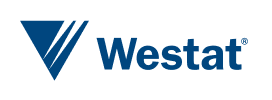This website uses cookies so that we can provide you with the best user experience possible. Cookie information is stored in your browser and performs functions such as recognizing you when you return to our website and helping our team to understand which sections of the website you find most interesting and useful.
How do observational studies of driver behavior lead to safer driving?
NOPUS and NSUBS: Providing accurate data on restraint use to inform targeted outreach

Challenge
Motor vehicle crashes are a leading cause of death and serious injuries for adults and children in the U.S. To support its mission of saving lives, the National Highway Traffic Safety Administration (NHTSA) develops and implements educational, engineering, and enforcement programs to prevent tragedies associated with crashes. An essential component of advancing and refining efforts to improve occupant protection is obtaining accurate data on restraint use to inform targeted outreach.
In 1991, the Intermodal Surface Transportation Efficiency Act (ISTEA) required data and analysis be provided on lap and shoulder belt use, nationally and in each state, by federal, state, and local law enforcement officers, by military personnel, by federal and state employees other than law enforcement officers, and by the public. As such, the first National Occupant Protection Use Survey (NOPUS) was conducted in 1994, and Westat has conducted the study annually since 1999.
In 2000, Congress passed the Transportation Recall Enhancement, Accountability, and Documentation (TREAD) Act directing the Department of Transportation (DOT) to reduce deaths and injuries among 4- to 8-year-olds by 25%. NHTSA awarded Westat the contract to design and conduct the National Survey of the Use of Booster Seats (NSUBS) to measure child restraint use among children ages 0 to 13 years old.
Solution
The NOPUS and NSUBS surveys are designed to provide the information needed to guide NHTSA’s efforts and meet the aforementioned challenges. For NOPUS specifically, data collectors observe passenger vehicles and motorcycles during daylight hours. They record seat belt use in the first and second rows, motorcyclists’ helmet use, and driver electronic device use. To complete the NOPUS, Westat’s field data collectors visit approximately 2,000 sites across the U.S. The work is divided between 2 observers, and they stand on roadsides and drive along highways to collect the required information.
Field staff use smartphone devices to collect data and GPS technology to obtain driving directions to data collection sites. Our geographic information systems (GIS) staff perform complex scheduling, mapping, and quality control procedures to facilitate tracking of fieldwork and progress reporting. Throughout each day, the data are transmitted and reviewed promptly to ensure accuracy and completeness.
In 2022, Westat staff observed 119,400+ occupants in 98,300+ vehicles in the NOPUS Moving Traffic Survey. As noted in NHTSA’s Traffic Safety Facts article: Seat Belt Use in 2022 – Overall Results, “The national estimate of seat belt use by adult front-seat passengers in 2022 was 91.6%, a record high although not statistically different (at the 0.05 level) from 90.4% observed in 2021.” Because the NOPUS sites were selected probabilistically, we can test the statistical significance of changes in estimates across multiple years and analyze trend data.
NSUBS provides a snapshot estimate of child restraint use in the U.S. wherein our staff biennially collect data from 400+ sites, including day care centers, fast food restaurants, gas stations, and recreational centers nationwide to gather this information. They observe 8,000+ children in 5,000+ vehicles and conduct brief interviews with drivers to determine the age, height, weight, race, and ethnicity of the child occupants. This information provides restraint use estimates for children and helps gauge the extent to which children are prematurely transitioned out of restraints before they are ready or in restraints inappropriate for their age, height, and weight. It also provides demographic information, which helps NHTSA target its programs, policies, messaging, and outreach to promote the importance of proper child restraint use.
Preparation for the surveys begins with high-quality sample designs, development of field procedures, training of field data collectors, and development of technology infrastructures to support quality control procedures and data analysis. Periodically, our statisticians update the sample to reflect the country’s changing population centers and traffic characteristics. Both surveys use complex, multistage probability samples; statistical data editing; imputation of unknown values; and complex estimation procedures.
Results
By providing the agency with the critical data it needs, NHTSA can determine the effectiveness of its programs, policies, public service campaigns, and outreach to promote the importance of restraint use for all occupants. The demographic data we deliver also help NHTSA better target its safety messaging.
Our latest NOPUS survey showed that seat belt use has increased. The national estimate of seat belt use by adult front-seat passengers in 2022 was 91.6%, compared to 84.1% in 2009. The latest NSUBS found restraint use for all children under 13 was 89.8% in 2021, although not statistically different than the 2019 estimate of 87.9%.
Westat’s historical knowledge, large-scale observational experience, child passenger safety experts, and new breed of data scientists enable us to help NHTSA achieve its mission.
Adele Polson, Project Director
Focus Areas
Transportation Transportation SafetyCapabilities
Advanced Technologies Data Collection Data Science Geospatial Data Processing and Analytics Survey DesignSenior Expert Contacts

Adele Polson
Senior Research Associate

Doreen De Leonardis
Associate Vice President
-
Perspective
Teacher Apprenticeships Strengthen the WorkforceJuly 2024
Many state education agencies (SEAs) are addressing teacher shortages by creating and expanding alternative paths to the teaching profession. One fast-growing option is teacher apprenticeships,…
-
Expert Interview
Passport to Careers: Aiding Foster and Homeless Young AdultsJuly 2024
The Passport to Careers program in Washington State supports former foster youth and homeless youth unaccompanied by a parent or guardian in achieving their college…
-
Perspective
Highlights of Westat at AAPOR 2024May 2024
We’ve returned from the 79th Annual American Association for Public Opinion Research (AAPOR) Conference, held May 15-17 in Atlanta, where we caught up with colleagues…



